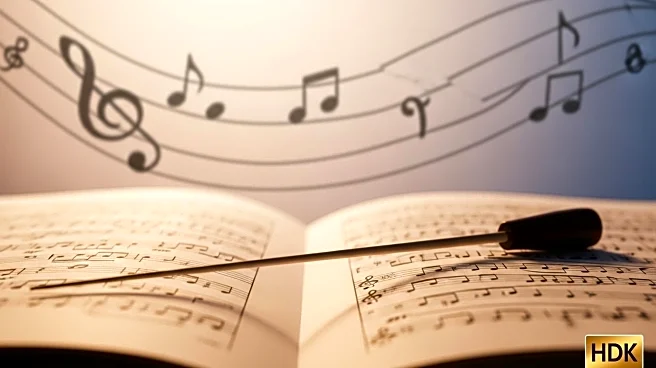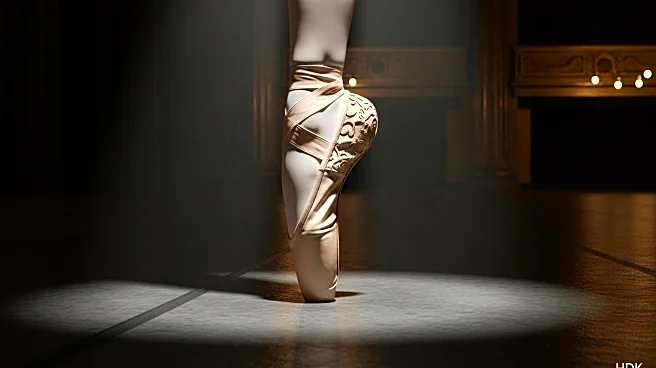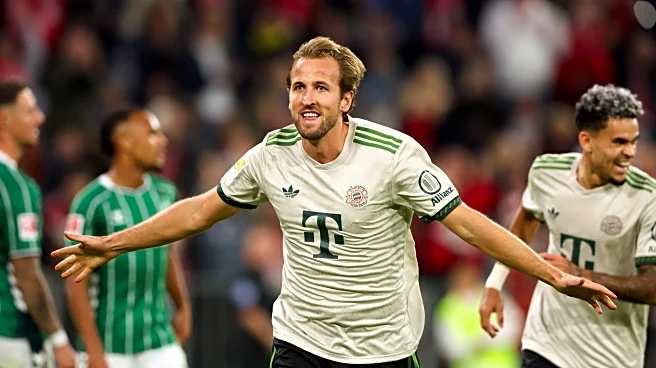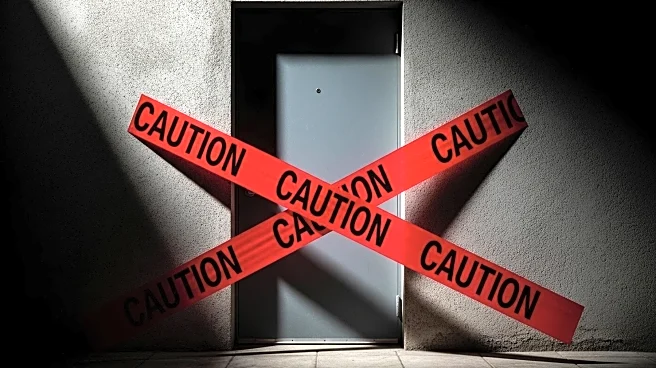What's Happening?
Sigur Rós, the Icelandic post-rock band, has embarked on a tour featuring collaborations with classical musicians in various cities. Their recent performance at the Royal Albert Hall in London showcased a seamless blend with the London Contemporary Orchestra. The band, known for its grand orchestral crescendos, performed pieces from their latest album, Átta, alongside earlier favorites. The concert was marked by refined and elegant music, with Jónsi's pristine vocals complemented by the orchestra's strings and brass. The performance included guest appearances, such as treble Malakai Bayoh, and featured the Schola Cantorum boys' choir and organist Anna Lapwood, culminating in a powerful crescendo.
Why It's Important?
This collaboration highlights the band's ability to innovate while staying true to their roots, offering audiences a unique musical experience. By integrating classical elements, Sigur Rós not only expands their artistic reach but also bridges the gap between contemporary and classical music. This approach may influence other artists to explore similar collaborations, enriching the music industry with diverse sounds and experiences. The performance's success underscores the enduring appeal of orchestral music and its potential to captivate modern audiences.
What's Next?
As Sigur Rós continues their tour, they are expected to collaborate with different orchestras, potentially leading to new interpretations of their music. This could result in further artistic exploration and possibly inspire new compositions. The band's approach may encourage other musicians to seek similar partnerships, fostering a trend of cross-genre collaborations. Fans and critics alike will be watching to see how these performances evolve and what new creative directions the band might pursue.
Beyond the Headlines
The collaboration between Sigur Rós and classical musicians raises questions about the future of live music performances. It challenges traditional concert formats and suggests a shift towards more immersive and visually integrated experiences. This trend could influence how venues and artists approach live shows, prioritizing not just auditory but also visual and emotional engagement. The success of such performances may lead to increased investment in innovative concert experiences, benefiting both artists and audiences.











